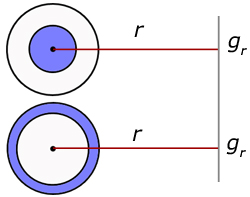Home >> Fields, gravitational fields 1
Newton's Law of gravitation |
Newton's Law of Gravitation
For two masses displaced a distance apart,
the gravitational force of attraction of one mass on the other is directly proportional to the product of the two masses and inversely proportional to the square of the distance between them.
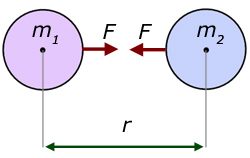
If the masses are m1 and m2 , with their centres of mass displaced a distance r apart, then the force of attraction F of one mass on the other is described as:
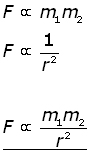
The proportionality can be made into an equation using a constant of proportionality. This constant we call G, the Universal Gravitational Constant.

G = 6.67 x 10-11 N m2 kg-2
Gravitational force is very weak! This can be shown by considering two 1 kg masses 1 m apart. The gravitational force between them is given by:

The gravitational force between everyday objects is so small as to be almost irrelevant.
Variation of 'g' with distance from the Earth's centre
To understand this work we must recall that 'g' is the acceleration due to gravity (9.8 ms -2). This value is for the surface of the Earth. Weight W is the force of attraction of the earth on a mass. For a mass m, the weight is given by:
![]()
The mathematical treatment depends on two assumptions:
1. The value of g is the same at a distance from a mass, whether the mass is in the shape of a spherical shell or concentrated in the centre.
2. The value of g everywhere inside a spherical shell is zero.
NB the spherical shell and central mass have uniform density
First consider a mass m on the surface of the Earth. The force of attraction between the mass and the earth is its weight W. This is also equal to the force F between the mass and the Earth, given by Newton's Law.
![]()

 (i
(i
Where ME is the mass of the Earth, rE its radius.
Now let us consider the value of g at a distance r from the Earth.
case where r > rE
If this new value is gr , then by similarity with equation (i,
![]() (ii
(ii
Dividing equation (ii by equation (i,
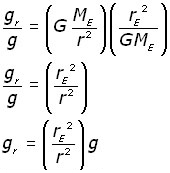 (iii
(iii
case where r < rE
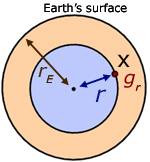
In the diagram the point X is inside the earth at a distance r from the centre.
From our initial assumptions, the value of gr is a result of the gravity from a sphere of radius r .
If MS is the mass of the sphere, then by comparison with equation (i ,
![]()
![]() (iv
(iv
NB the effect of matter (in the form of a shell) above point X has no effect on the value of gr
let us assume that masses have uniform density ρ (rho).
Remembering that m = ρV , the mass MS of the internal sphere and the mass ME of the Earth is given by:
![]()
![]()
dividing the first equation by the second,
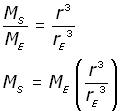
Substituting for MS from equation (iv ,


recalling that 
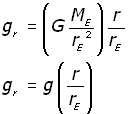
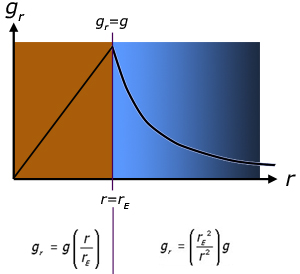
NB gr = g when r = rE
Summary
So for inside the Earth, gr is directly proportional to r . The graph is therefore a straight line through the origin.
For outside the Earth, gr follows a function similar to y = x-2 , where x decreases steadily, approaching zero at infinity.

where rE and g are constants
this week's promoted video
[ About ] [ FAQ ] [ Links ] [ Terms & Conditions ] [ Privacy ] [ Site Map ] [ Contact ]

